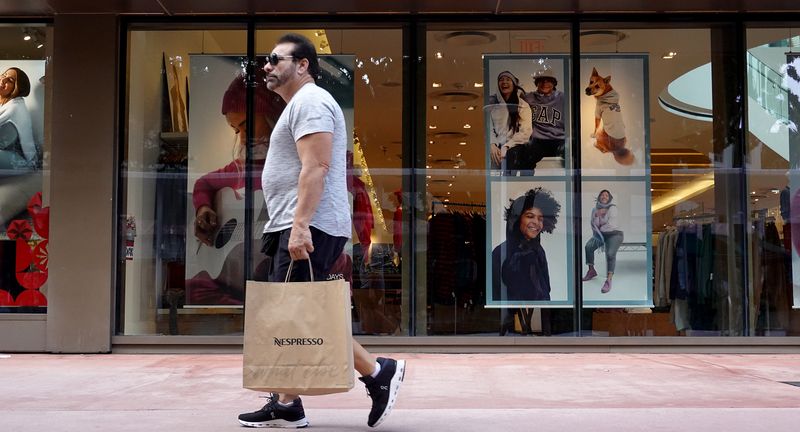A person walks past retail stores at the Lincoln Road mall on December 14, 2021 in Miami Beach, Florida. Joe Raedle via Getty Images
By Tatiana Walk-Morris
Source: www.paymentsdive.com, October 2022
Dive Brief:
- Highlighting the impact of inflation, consumers’ grocery spending in August was about 29% above pre-COVID-19 levels in 2019, according to a new Mastercard report. Global food prices have climbed 48% since 2019, fueling the higher spending on dining and groceries, Mastercard said in its Sept. 28 report, citing a United Nations price index.
- Spending on eating out at restaurants was up 25% between January and August, compared to the same period last year, while grocery spending was up just 14% for the period relative to last year, according to the report, which examined evolving consumer spending habits.
- E-commerce sales for large retailers increased 66% compared to 2019. The report found that small businesses also saw a 27% e-commerce uptick over 2019 levels. Worldwide spending on flights between May and August rose 15% compared to 2019, the report said.
Dive Insight:
Digging into the increased spending for groceries relative to pre-pandemic levels, Mastercard’s report revealed a difference in spending based on consumer habits. The report revealed that while consumers spent 70% more for food needs when shopping online, compared to pre-pandemic levels, they didn’t stomach as much increase for in-person shopping, spending 25% more in stores for groceries than before the pandemic.
Mastercard’s previous research has tracked persistent consumer spending despite inflation concerns. In June, retail purchases, excluding automotive sales, increased by 9.5% compared to last year, according to a Mastercard SpendingPulse survey. As gas prices soared earlier this year, Mastercard also found that shoppers were spending 42% more on fuel and convenience store items.
That increase in spending continued the following month. Mastercard’s SpendingPulse report released in August found that retail spending, excluding automotive and gas sales, rose 9% in July over the year-earlier period. Travel spending also climbed, with that SpendingPulse report showing that lodging purchases rose 29.6%, and airline sales had a 13.3% uptick, as pandemic-weary consumers pursued travel plans once again.
“The shifts in spending preferences come as consumers settle into a new rhythm,” Mastercard Chief Economist Bricklin Dwyer said in the statement. “Despite contending with rising prices, interest rates and growing economic uncertainty, consumers continue to evaluate their spending habits based on what works best for their lives.”
Those spending increases are expected to continue in the holiday season, according to Mastercard. The card network’s September SpendingPulse report predicts that shoppers will spend 7.1% more this holiday season year-over-year. Compared to 2021, consumers are expected to spend 7.9% more offline and 4.2% more online.
While higher grocery prices are stressing some consumers, their increased spending has buoyed card companies. American Express saw a 29% jump in its Q1 revenue, and its total network payment volume rose 30% to $350 billion. During the Q1 earnings call, American Express CEO Stephen Squeri said future travel reservations were about 37% higher domestically than they were in 2019, and about 48% higher globally.
However, Squeri also said that travel and entertainment spending on the Amex cards had not surpassed 2019 levels, even though they had doubled over last year.
Similarly, Visa reported a 32% jump in net income to $3.4 billion for its fiscal third quarter ending in June, compared to last year, and a 19% rise in revenue to $7.3 billion for the quarter. Visa CEO Al Kelly partly attributed the positive results to a rebound in travel spending.

